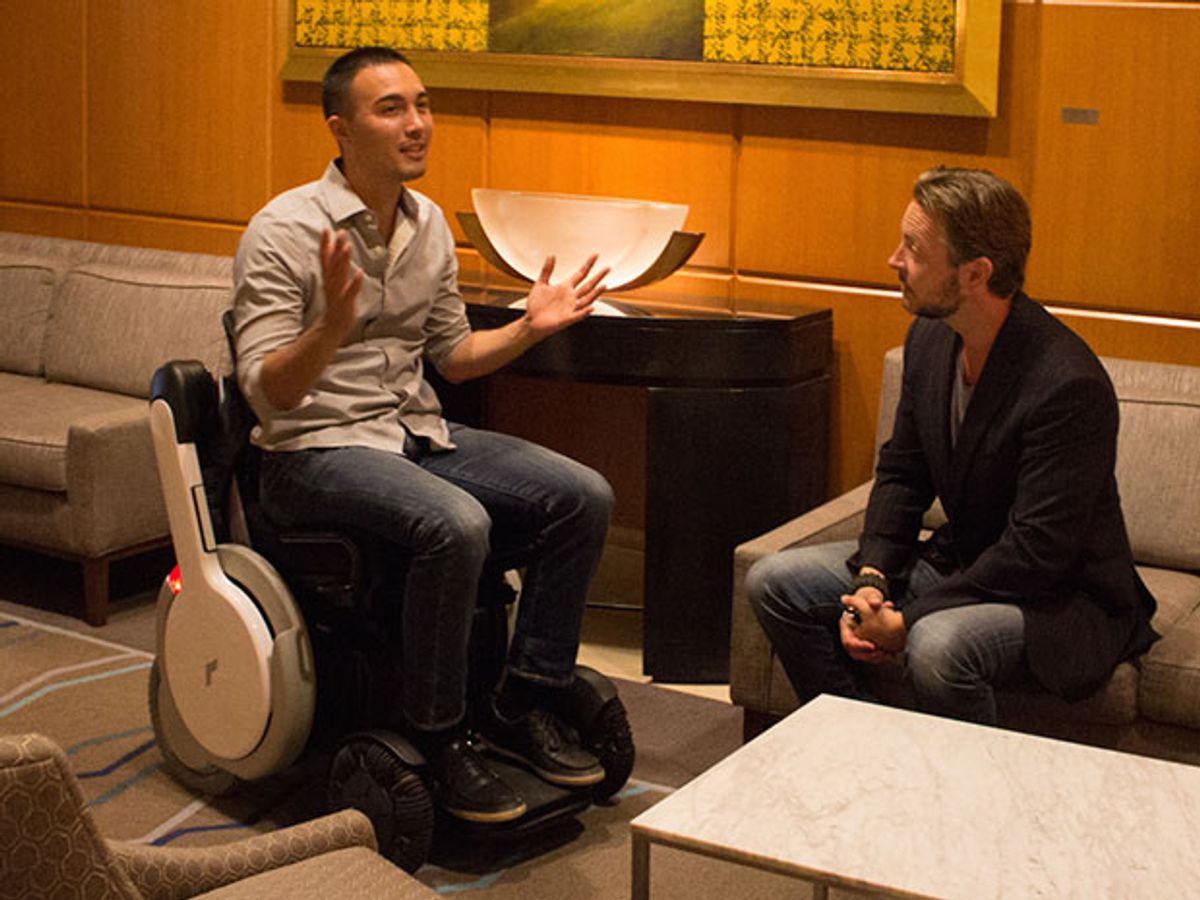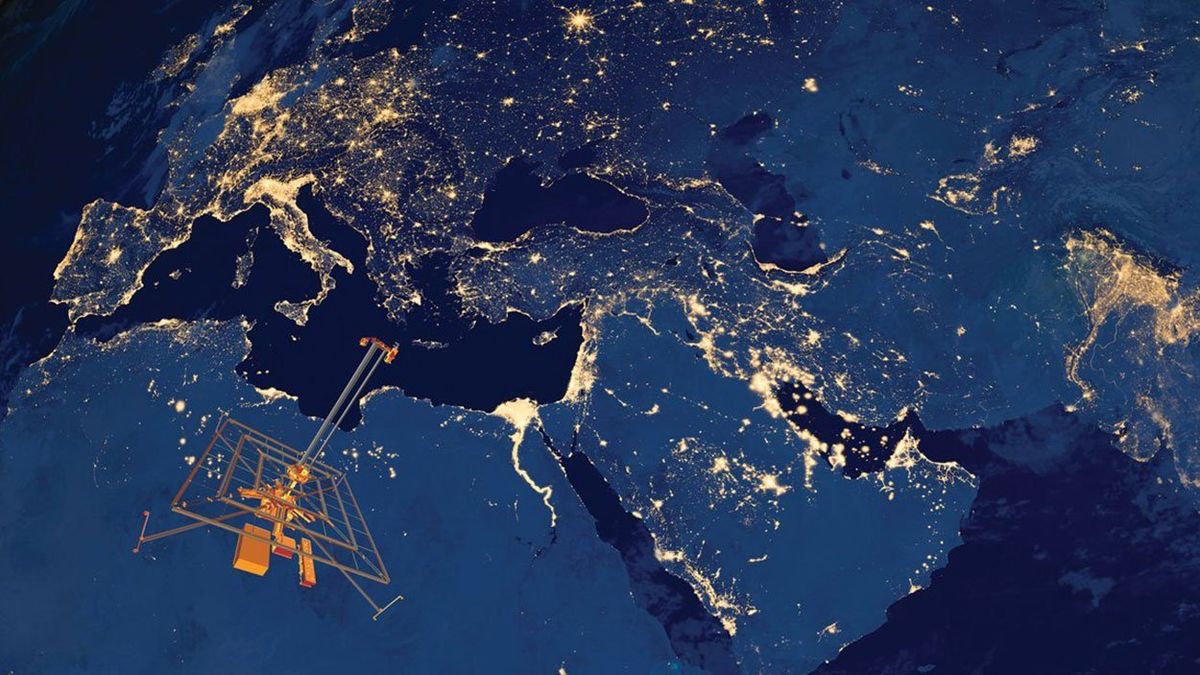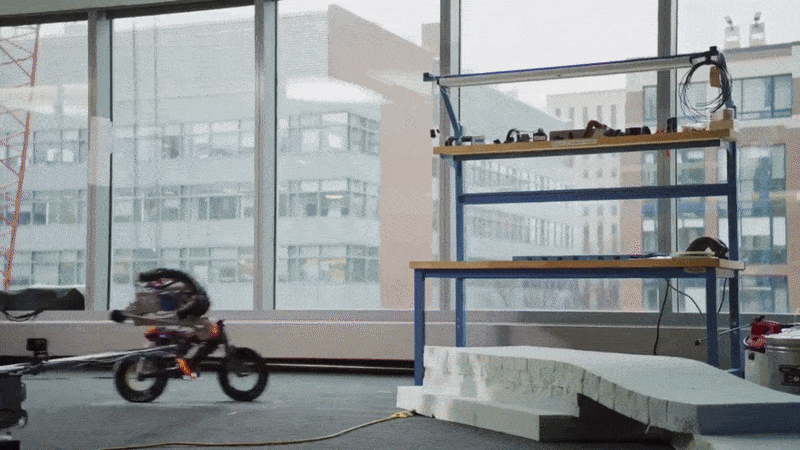GPS falls from the sky and costs nothing to use, but it may not reach a car roving the canyons of Manhattan or a forklift moving boxes in a warehouse. For uninterrupted autonomous driving, you need some backup.
Sure, you can festoon your vehicles with a vast array of overlapping sensors, but even that won’t always give you a clear sense of where you are. So, when the GPS satellites can’t pinpoint you, why not resort to land-based beacons?
That’s the solution proposed by 5D Robotics, a Carlsbad, Calif. company that marks anchor points with transmitters that broadcast in ultra-wide-band frequencies. The UWB signal is very low in power, so you have to be within 200 meters, but that’s okay if you have enough beacons, according to Philip Mann, the company’s vice president for sales.
“It’s a peer-to-peer system,” Mann told IEEE Spectrum at Robouniverse, a conference held this week in New York City. “The beacons measure the distance between themselves by simple ranging; then a vehicle can navigate by triangulation.” The vehicle may have a transmitter of its own, the better to serve as a moving beacon; or, it may simply carry a UWB tag.
Very low power is obligatory in such systems because they broadcast along a very wide spectrum of frequencies (hence the UWB moniker). Give it too much power and you’ll interfere with every wireless app in sight, including your garage-door opener.
But it’s great in closed-off environments, like a warehouse or an outdoor loading zone, like this one:
Of course, you could instead lay down a detectable tape to guide your vehicles, but then it would be hard to re-choreograph their movements. With the beacon system, it takes just a few mouse clicks.
5D Robotics (as distinct from 3D Robotics, the UAV company founded by Chris Anderson), was established in 2009 with the idea of going after the military market. “They are good for following—that’s when a soldier walks or drives in front, and an autonomous vehicle follows, carrying cargo,” Mann says. You can also lead a UAV along, an idea that might interest utility companies, which want to use drones to survey power lines from the air but are required by the FAA to put them in charge of a ground-based observer.
One military point in favor of beacons is that they are far harder than GPS to spoof. The same goes for indoor navigation systems based on Wi-Fi, which bad guys get into all the time, if only to pilfer Internet service. If you positively, absolutely can’t allow unauthorized access to your system, UWB beacons are the obvious alternative.
Forklifts are one thing, but human transport is another. 5D Robotics is testing that market carefully, beginning with a slow-moving, supersafe application: guided wheelchairs. Together with Whill, a San Francisco startup, it’s developing the Model A, which just got its first public outing at Robouniverse.
The Model A wouldn’t rely solely on UWB, but would also incorporate a variety of sensors, perhaps including LIDAR, to enable it to tag along behind a person or vehicle along a virtual defined path. “Hotels could use it to deliver elderly people to their cars; casinos could use it to deliver high rollers to their playing tables,” Mann says.
Where have we all seen these things before? In Wall-e, the Disney Pixar movie:
Philip E. Ross is a senior editor at IEEE Spectrum. His interests include transportation, energy storage, AI, and the economic aspects of technology. He has a master's degree in international affairs from Columbia University and another, in journalism, from the University of Michigan.



